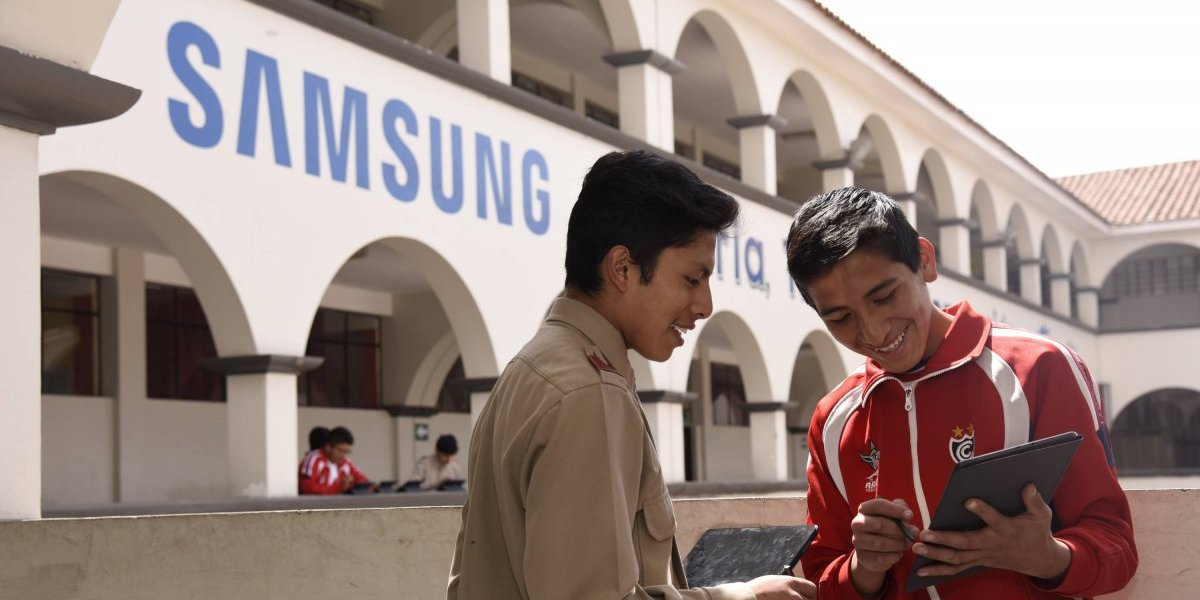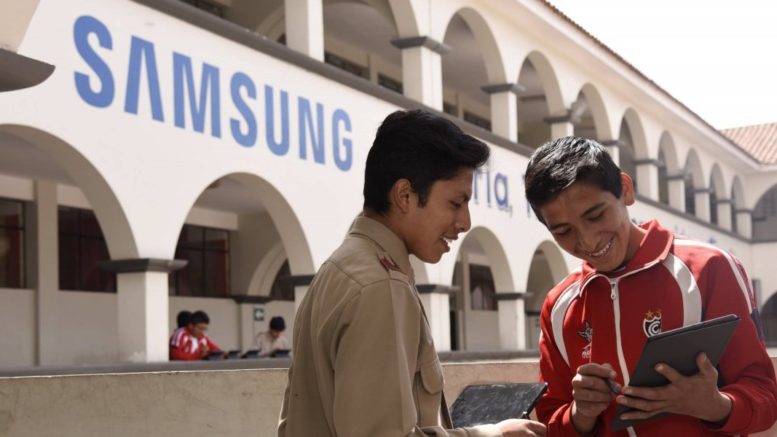By Tom Jagger - Latin America unites a number of densely populated countries with a total population of over 600 million. However, these countries face a lot of challenges that inevitably influence the state of their education. E-learning could open a new door of opportunity amid hard times.
One major factor that influences modern education in Latin America is economic crisis. Modern education in Latin America is greatly influenced by the economic growth, which, according to The Economist’s recent overview has been rather disappointing and doesn’t have enough room for improvement.
The overall financial situation in Latin America is suffering because of collapsing economies in such countries as Venezuela, Argentina, Brazil and Peru, while other countries such as Mexico and Colombia show a slow economic growth rate only of 2-3%. Thus, education in Latin America, which largely depends on the economic well-being of its citizens, is now at crossroads.
High Poverty Rates

Numerous reasons of massive college drop-out involve poverty, too because students simply cannot afford to pay off student loans. Photo (c) The Economist 2017
The second factor that largely influences the quality of education is poverty. Only in Mexico poverty rates exceeded 45%, which makes it total 55 million of people. This issue forced many children to skip getting the primary and secondary education, not talking about aiming for higher college or university education.
In recent years, however, citizens of the Latin America countries started to get more opportunities to get the education they need. The number of university and college students has reportedly doubled in recent years, but only half of them actually graduates.
Numerous reasons of massive college drop-out involve poverty, too because students simply cannot afford to pay off student loans.
Lack of Technological Support
According to the UNESCO report, schools and universities at the countries of the Latin America cannot access necessary technology and information thus influencing the overall quality of education. Photo (c) Gestión 2017
Another reason that shapes shaky status of modern education in the Latin America is lack of financing and necessary school and college equipment.
Such thus makes education in these countries very short of potential.
According to the UNESCO report, schools and universities at the countries of the Latin America cannot access necessary technology and information thus influencing the overall quality of education.
E-Learning and Modern Education in Latin America

OECD study suggests that by 2020 the use of e-learning methods in the universities of Latin America will increase by at least 16%. Photo (c) OECD 2017
Nevertheless, universities in Latin America try to keep up with modern trends in education and incorporate e-learning into their curricula. The Organization for the Economic Co-operation and Development (OECD) has conducted a survey in 34 universities in 15 countries of Latin America and they all welcomed e-learning and found it extremely relevant.
OECD study suggests that by 2020 the use of e-learning methods in the universities of Latin America will increase by at least 16%.
But how can we get more from e-learning and actually spread it not just among the universities, but also among public schools? How to make e-learning more beneficial? Here are the guidelines to effective e-learning that will benefit modern education in Latin America.
Step 1: Engage the Teachers
E-learning techniques should be incorporated into the university curricula, which should explain the students the importance of this approach to learning. Photo (c) INIA 2017
Getting teachers to engage into the process of e-learning is the first step of incorporating it into the education process.
E-learning techniques should be incorporated into the university curricula, which should explain the students the importance of this approach to learning.
They will learn how to engage students better with e-learning in order to improve the quality of education in general.
Step 2: Provide Feedback
It gives students confidence and desire to continue their education, promotes critical thinking and encourages the variety of opinions. Photo (c) AVI Latinoamerica 2017
Feedback in education, or academic feedback, is very important for the quality of learning. It gives students confidence and desire to continue their education, promotes critical thinking and encourages the variety of opinions.
There are various ways to incorporate feedback in the e-learning process, for instance, providing your students with group tasks and collaborative exercises. This can be exercised through live chats and social media, which will allow you to get feedback from the whole group.
This way students will become more engaged and interested in working on their skills and improving their knowledge.
Step 3: Don’t Rush Into It

It is very important to start the e-learning process slow and not to overload students with massive amounts of information and unknown terms. Photo (c) Wikicommons 2017
Some students, who attend universities in the countries of Latin America, come from poor families and perhaps have never owned a computer or a tablet. So when they face e-learning, they may get confused because they lack skills in using technology.
It is very important to start the e-learning process slow and not to overload students with massive amounts of information and unknown terms.
Easy tasks and friendly engaging atmosphere is the key to start the effective e-learning process.
Step 4: Act Local, Think Global
But as we live in the world of globalization, getting students to know the international practices from all over the world is necessary to improve their outlook. Photo (c) Alto Nivel 2017
As the main aim of education of any country is to raise a citizen who would proudly represent this country. That is why education system of any country is basically aimed at domestic values. But as we live in the world of globalization, getting students to know the international practices from all over the world is necessary to improve their outlook.
For example, during the course of academic or creative writing, a teacher may introduce some ideas and methodologies that professional essay writers from all over the world use in their practice.
Or students from medical universities can study treatment cases from other countries and analyze them in a chat room online. This a great way to learn about trends that are popular all over the world, which will later help students in their own career.
Step 5: Use Scenario-Based Learning

And while traditional lessons at school are sometimes limited in possibilities, lessons in e-learning can incorporate a lot more content. Photo (c) Metro PR 2017
The education process is all about scenarios. Teachers prepare specific scripts for each lesson. But e-learning lesson should be well-scripted too. And while traditional lessons at school are sometimes limited in possibilities, lessons in e-learning can incorporate a lot more content.
Besides, it’s easier to navigate through this content and it looks a lot more engaging than during a traditional lesson or lecture. Students become active participants and can instantly share their opinions with others.
Also, e-learning content is easier to navigate, so it’s a win-win.
Concluding Thoughts

So in order to ensure a future free of poverty and steady in economic growth, governments of Latin America should start with quality education, accessible to each citizen. Photo (c) University of Pennsylvania 2017
While modern education in the countries of Latin America tries to keep up with the global trends and introduced e-learning to many universities, there are still lots of improvements to be made. However, the major improvement should involve engaging public schools to incorporate e-learning into their curricula too.
Governments should unite to work on providing schools with all necessary supplies so that children could get high-quality education starting from the first grade.
Education is crucial for every person. Depriving people of education is taking away their basic rights. So in order to ensure a future free of poverty and steady in economic growth, governments of Latin America should start with quality education, accessible to each citizen.
*******
ABOUT THE AUTHOR
Tom Jager is professional blogger. He works at Awriter. He has degree in Law and English literature. Tom has written numerous articles/online journals. You can reach him at G+ or Facebook.

